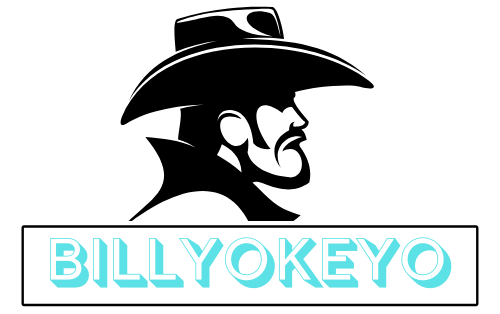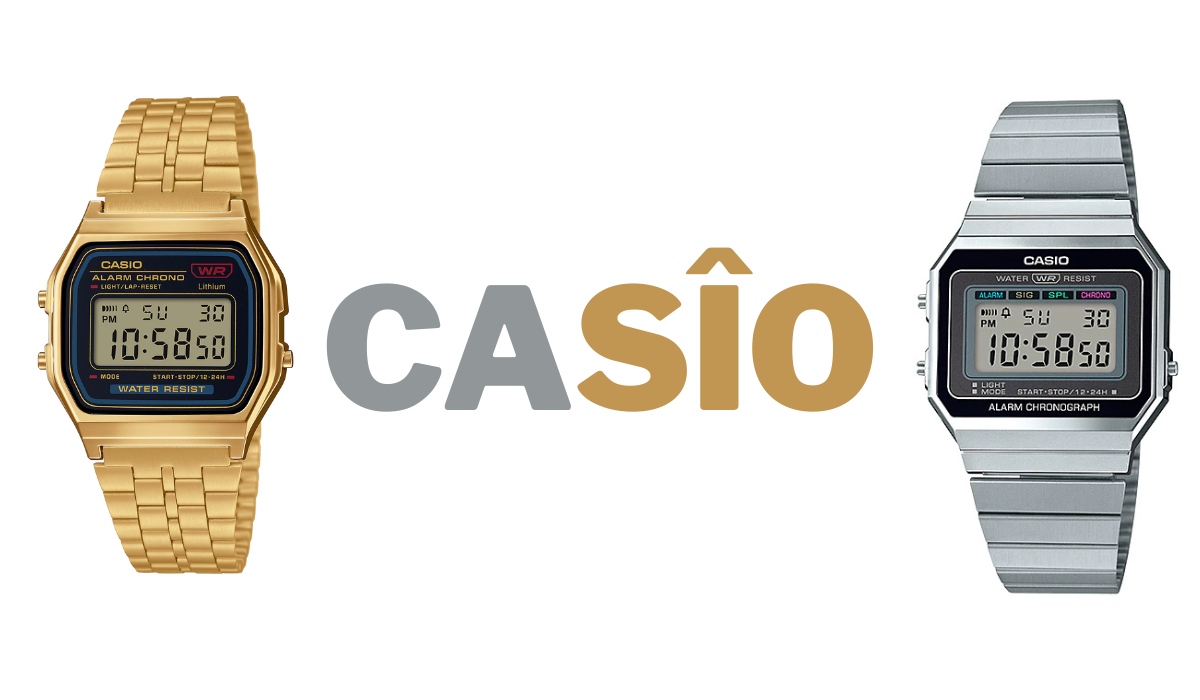When you think of brands that have shaped modern technology, names like Apple, Sony, or Samsung might come to mind. But there’s one Japanese company that has quietly revolutionized everything from wristwatches to musical instruments for over seven decades: Casio. Founded in 1946 by Tadao Kashio and his three brothers, this Tokyo-based company started with a simple cigarette holder invention and grew into a global powerhouse that would redefine what we expect from consumer electronics.
Casio’s journey represents more than just corporate success. It’s a story of innovation, resilience, and the relentless pursuit of making advanced technology accessible to everyday people. From the world’s first compact electronic calculator to the virtually indestructible G-Shock watch, Casio has consistently challenged conventional wisdom about what electronic devices should look like, how they should function, and who should be able to afford them.
The company’s impact extends far beyond Japan’s borders. Whether you’ve used a scientific calculator in math class, worn a digital watch, or played a Casio keyboard, you’ve likely encountered this brand’s influence on modern life. But how did a small post-war Japanese company become such a significant force in global technology? The answer lies in understanding Casio’s unique approach to innovation and its ability to anticipate what consumers need before they even know they need it.
The Foundation Years: Building an Empire on Innovation
The Casio story begins in the ashes of World War II, when Tadao Kashio founded Kashio Seisakujo (Kashio Manufacturing) in 1946. The company’s first product wasn’t a calculator or a watch—it was the “yubiwa pipe,” a cigarette holder that allowed smokers to use their cigarettes down to the very end. While this might seem like a modest beginning, it established a pattern that would define Casio for decades: identifying everyday problems and solving them with clever engineering.
The breakthrough came in 1954 when Tadao Kashio observed people using mechanical calculators at a business exposition. These machines were enormous, expensive, and required manual operation. Kashio envisioned something revolutionary: an electronic calculator that could perform calculations automatically. After three years of development, Casio released the Model 14-A in 1957, the world’s first compact all-electric calculator.
This wasn’t just a technological achievement; it was a paradigm shift. While competitors focused on improving mechanical systems, Casio had leap-frogged directly to electronics. The Model 14-A could perform the four basic arithmetic operations using electric solenoids and was significantly faster and more reliable than mechanical alternatives. This success established Casio Computer Co., Ltd. in 1957 and set the stage for decades of innovation.
The calculator business proved incredibly lucrative throughout the 1960s and early 1970s. Casio continued pushing boundaries, introducing features like memory functions, scientific calculations, and eventually, programmability. However, the company’s leadership recognized that relying on a single product category was risky. This wisdom would prove prescient as calculator prices plummeted due to increased competition and advancing technology.
The Digital Watch Revolution: Timing is Everything
By the mid-1970s, Casio faced a critical decision. The calculator market was becoming commoditized, with prices dropping rapidly as more manufacturers entered the field. Rather than engage in a race to the bottom, Casio leveraged its expertise in miniaturization and digital displays to enter an entirely new market: wristwatches.
The Swiss watch industry dominated global timepiece sales, built on centuries of mechanical expertise and luxury craftsmanship. Digital technology was still viewed with skepticism by traditional watchmakers. Casio saw opportunity where others saw impossibility. In 1974, the company launched the Casiotron, its first digital watch. Priced at around $125 (approximately $650 in today’s money), it offered features that mechanical watches simply couldn’t match: automatic calendar adjustment, multiple time zones, and incredibly precise timekeeping.
The Casiotron’s success opened floodgates of innovation. Throughout the late 1970s and early 1980s, Casio introduced watches with calculators, alarms, stopwatches, and even simple games. Each new model pushed the boundaries of what a watch could do while maintaining affordability that made these technological marvels accessible to average consumers.
But Casio’s most significant breakthrough was still to come. The company’s engineers were working on something that would not just compete with traditional watches but completely redefine what durability meant in the timepiece industry.
Iconic Models That Changed Everything
The G-Shock: Unbreakable by Design
In 1981, a young Casio engineer named Kikuo Ibe dropped his father’s watch and broke it. This personal frustration sparked an obsession: creating a watch that would never break, no matter how roughly it was treated. Ibe’s vision was ambitious—a watch that could survive a 10-meter drop, resist water pressure up to 10 bars, and maintain a 10-year battery life. Colleagues thought he was crazy.
After two years of relentless experimentation, including dropping prototypes from bathroom windows and testing them with hammers, Ibe’s team achieved the impossible. The DW-5000C, launched in 1983 as the first G-Shock, could withstand punishment that would destroy any other timepiece. Initial sales were disappointing—the chunky, utilitarian design looked nothing like traditional watches. But once word spread about its incredible durability, G-Shock became a phenomenon.
The G-Shock succeeded because it targeted users who actually needed extreme durability: construction workers, military personnel, athletes, and outdoor enthusiasts. Traditional watch companies had ignored these markets, focusing instead on dress watches and luxury timepieces. Casio identified an underserved segment and created a product that perfectly met their needs.
The F-91W: Simplicity Perfected
While G-Shock captured headlines for its ruggedness, another Casio watch was quietly becoming one of the most popular timepieces in history. The F-91W, introduced in 1989, represented the opposite philosophy from G-Shock’s complexity. This basic digital watch offered essential functions—time, date, alarm, and stopwatch—in an incredibly affordable package that typically retailed for under $20.
The F-91W’s genius lay in its simplicity and reliability. The watch was accurate, lightweight, and virtually maintenance-free. Its understated design worked equally well in boardrooms and classrooms. Perhaps most importantly, its low price made it accessible to consumers worldwide, regardless of economic circumstances.
Over three decades later, the F-91W remains largely unchanged and continues selling millions of units annually. Its enduring popularity demonstrates that sometimes the best technology is the simplest technology, executed flawlessly.
Calculator Watches: Wearable Computing Before Smartphones
Long before smartphones put computers on our wrists, Casio pioneered wearable computing with calculator watches. The CA-901 series, introduced in the early 1980s, featured full calculator functionality on the wrist. Users could perform complex calculations, store phone numbers, and even play simple games.
These watches might seem primitive compared to modern smartwatches, but they represented a fundamental shift in thinking about personal technology. Casio demonstrated that computing power could be portable, personal, and practical for everyday use. The calculator watch became a cultural icon, symbolizing the intersection of fashion and technology.
Beyond Timekeeping: Casio’s Broader Technology Impact
Musical Instruments: Democratizing Music Creation
Casio’s expansion into musical instruments began in 1980 with the MT-500, a small electronic keyboard designed for home use. Unlike expensive professional synthesizers, Casio’s keyboards were affordable and user-friendly, making electronic music creation accessible to amateur musicians and hobbyists.
The breakthrough came in 1982 with the MT-40, which featured preset rhythms and simple sound synthesis. Suddenly, anyone could create complete musical arrangements without extensive training or expensive equipment. Professional musicians initially dismissed these “toy” keyboards, but their distinctive sounds found their way onto countless hit records throughout the 1980s.
The Casio MT-500 and its successors democratized music creation much like Casio’s calculators had democratized complex mathematics. By making advanced technology affordable and approachable, Casio opened new creative possibilities for millions of people worldwide.
Digital Cameras: Early Innovation in Imaging
Casio entered the digital camera market in 1995 with the QV-10, one of the first consumer digital cameras to feature an LCD screen for image preview. While the 0.25-megapixel resolution seems laughable by today’s standards, the QV-10 represented another example of Casio’s ability to identify emerging technologies and make them accessible to mainstream consumers.
The company continued innovating in digital imaging throughout the 2000s, introducing high-speed cameras capable of capturing thousands of frames per second and ultra-thin models that prioritized portability. While Casio eventually exited the camera market as smartphones made dedicated cameras less necessary, their early contributions helped establish digital photography as a viable alternative to film.
Cultural Impact and Modern Relevance
Fashion and Status Symbol
Casio watches, particularly G-Shock models, transcended their utilitarian origins to become fashion statements and status symbols. Hip-hop artists in the 1990s embraced G-Shock’s bold aesthetic, wearing oversized models as expressions of personal style. This cultural adoption introduced Casio to new demographics and established the brand’s relevance beyond pure functionality.
The company capitalized on this cultural cachet by introducing limited editions, collaborations with artists and designers, and premium models that maintained G-Shock’s durability while adding luxury materials and sophisticated styling. Today, certain G-Shock models command prices of several thousand dollars, competing directly with traditional luxury watches.
Sustainability and Social Responsibility
Modern Casio has embraced sustainability as a core business principle. The company’s “Casio Sustainability Report” outlines commitments to reducing environmental impact through improved manufacturing processes, longer-lasting products, and responsible sourcing of materials. The inherent durability of products like G-Shock aligns naturally with sustainability goals—a watch that lasts decades reduces waste compared to frequently replaced alternatives.
Casio has also invested in solar-powered watches, reducing reliance on disposable batteries. Models like the Tough Solar series combine environmental responsibility with practical benefits, appealing to environmentally conscious consumers who don’t want to compromise on functionality.
Digital Transformation and Smart Features
While maintaining focus on core strengths like durability and affordability, Casio has selectively embraced smart features where they add genuine value. Bluetooth connectivity allows some G-Shock models to sync with smartphones for automatic time adjustment and additional functionality. However, Casio has avoided the complexity and frequent obsolescence that plague many smartwatches, instead focusing on features that enhance rather than replace traditional watch capabilities.
This measured approach to digitization reflects Casio’s understanding of its core customers, who value reliability and simplicity over cutting-edge technology that might become obsolete within a few years.
Global Reach and Accessibility
Casio’s commitment to affordability has made its products globally accessible in ways that many technology companies struggle to achieve. A basic Casio watch costs the same whether purchased in Tokyo, New York, or Lagos. This price consistency, combined with wide distribution networks, has made Casio products available to consumers regardless of geographic location or economic circumstances.
The company’s calculators remain standard equipment in classrooms worldwide, while its keyboards continue introducing new generations to music creation. This global presence ensures Casio’s continued relevance across diverse markets and demographics.
The Enduring Legacy of Innovation and Accessibility
Casio’s seven-decade journey from cigarette holder manufacturer to global technology icon illustrates the power of consistent innovation guided by clear principles. The company succeeded not by chasing every technological trend, but by identifying fundamental human needs and addressing them with elegant, affordable solutions.
The brand’s greatest achievement may be its democratization of advanced technology. Before Casio, electronic calculators were expensive business tools. Digital watches were luxury items. Electronic keyboards were professional instruments. Casio made all of these technologies accessible to ordinary consumers, fundamentally changing how people interact with electronic devices.
Looking forward, Casio faces challenges familiar to many established technology companies. Smartphones have replaced many dedicated devices, while consumer expectations for connectivity and smart features continue rising. However, the company’s history suggests it will continue finding ways to remain relevant by focusing on what it does best: creating durable, affordable products that solve real problems for real people.
The Casio story reminds us that sustainable success in technology comes not from constant reinvention, but from understanding core customer needs and consistently delivering value. In an industry obsessed with disruption and obsolescence, Casio has built a legacy based on products that last, work reliably, and remain affordable across decades of use. That may be the most impressive innovation of all.





